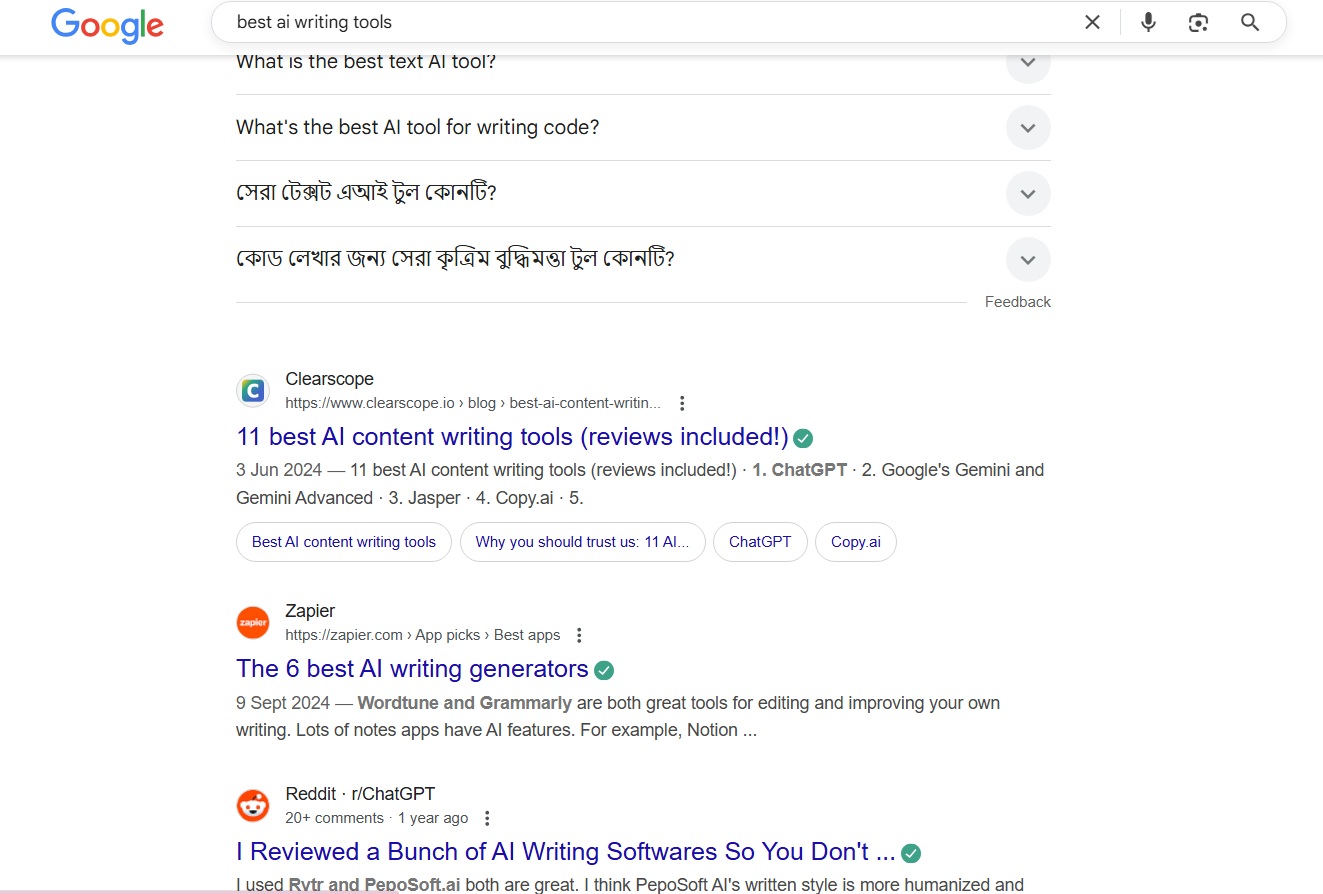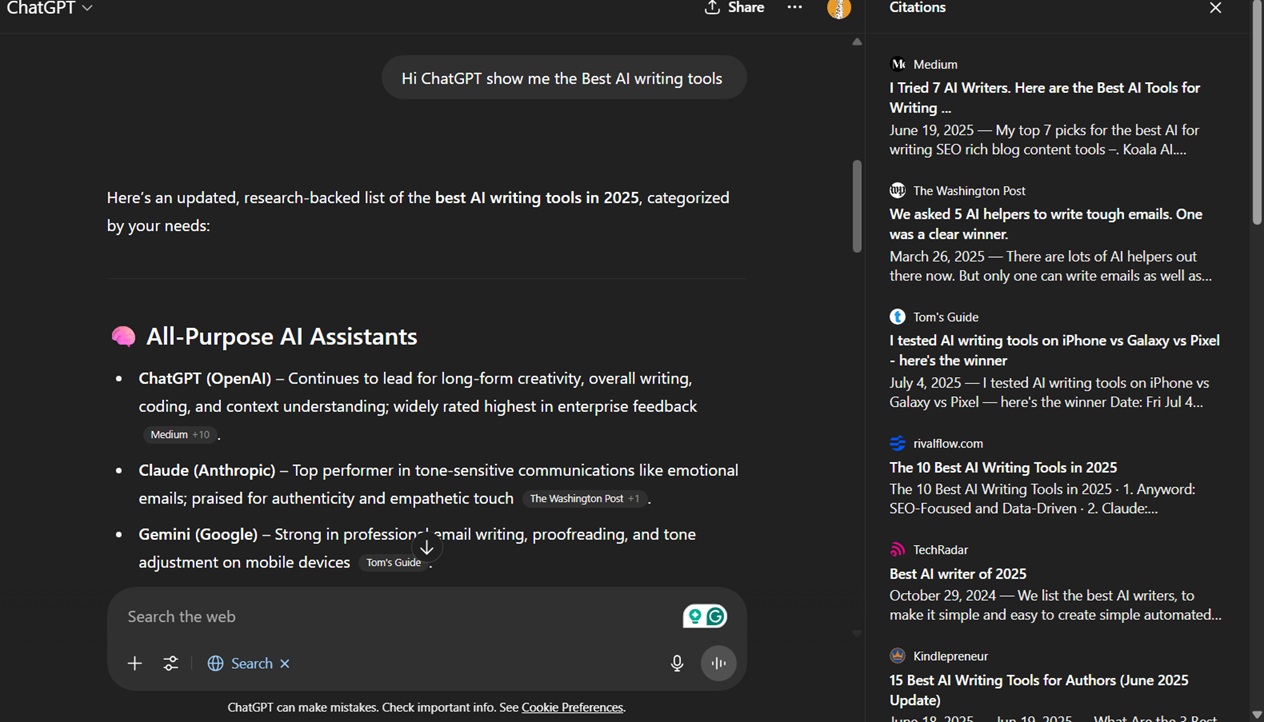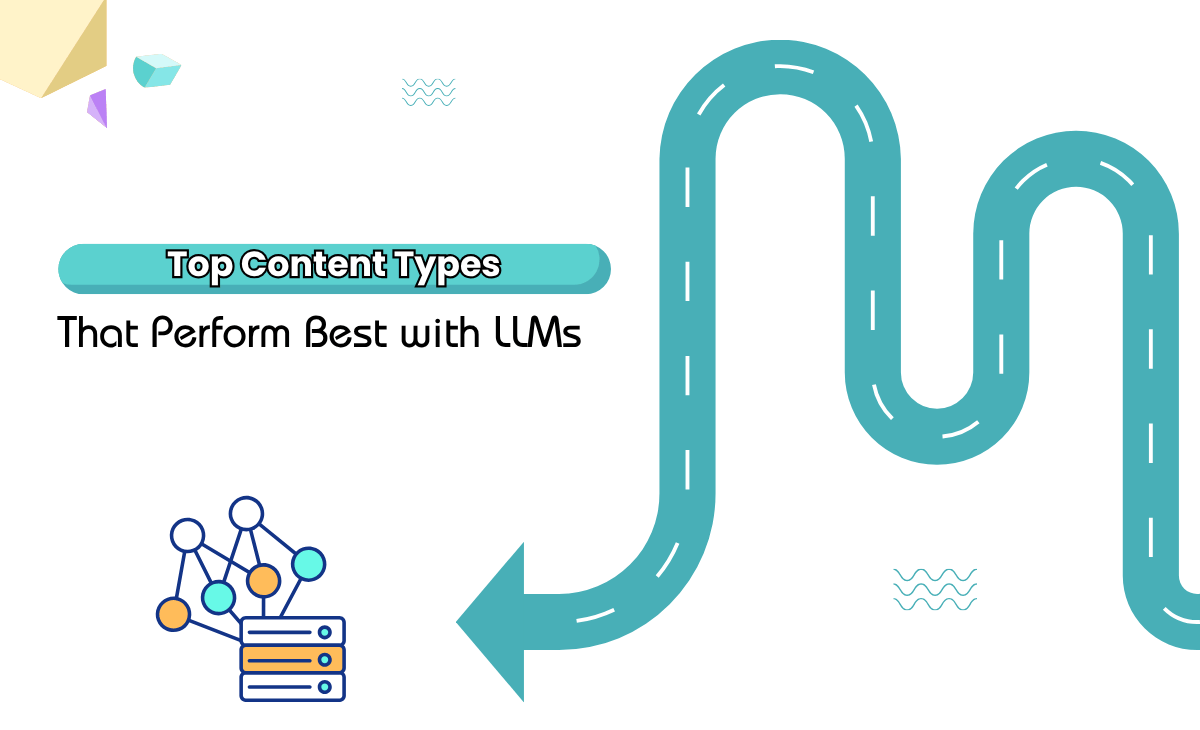There is a gradual shift happening in our perspective on writing our content. We are also now concerned about presenting our content in a way that works with LLMs. And why not? The potential to tap into the organic traffic with tools like ChatGPT, Gemini, or Claude is huge.
This is happening because the way we search the web and use the internet is changing. We prefer to rely on ChatGPT or Gemini for a quick answer rather than looking it up ourselves.
At this point, it's a proven fact that featuring in articles by LLMs can do a lot for the business. This is evident from a study by Backlinko, which says that ChatGPT has 400 million weekly active users worldwide.
Now, imagine the exposure to such a big chunk of traffic without paying a single penny! It’s nothing less than a marketer’s dream come true. However, there is a catch: you need to be mindful of the content you post.
In this blog, we will discuss the possibilities of being referred to by an LLM in the search results. We will also understand the top content types that perform best with LLMs and what you can do to be in their good favor.
Why Content Type Matters in an AI-Powered Workflow
Before we begin discussing the formats, let us first understand why we need to focus on the content type in an AI-powered workflow. A simple way to put this is how we have food preferences. We prefer one kind of dish over the other; similarly, AI prefers structured content over poorly written content, and so on.
Many people think that ChatGPT replicates the results from Google search, but honestly, it doesn’t have the training to do so.
The way LLMs deal with a search query is very organized; they try to simplify it and help you with an answer from content that their crawlers can read and understand.
A study published by Neil Patel bridges this gap in our understanding easily. It highlights that an LLM like ChatGPT relies on various factors like brand mentions, reviews, recommendations, and others.
However, since LLMs are unable to verify factors like trust, experience, or expertise, they also rely heavily on keywords. Let's dive into details with an example: imagine that you are looking for a new AI writing tool.
This is how Google and ChatGPT will process your query.


As you can see here, both of them suggested different links for the same query. This is where things get interesting. ChatGPT has cited websites with a domain authority of 26, along with one with 95, and so on.
Therefore, it’s not only about the basic SEO factors of establishing credibility and having authority; your content needs to have topical relevance for LLMs to take notice.
If you review the suggestions by ChatGPT, you will realize one thing: the keyword is explicitly mentioned, and it is not limited to only the top-ranking blogs.
As a writer or marketer, it is difficult for us to predict how exactly ChatGPT or any other LLM, for that matter, was trained to perform tasks. But we can always keep our basics right.
Along with focusing on SEO and E-E-A-T guidelines for Google, we must shape our content in a way that it can trigger the trust signals with ChatGPT and other LLMs efficiently.
Top Content Types That Perform Best with LLMs
Another thing you must keep in mind is that LLMs process content differently than we do. They rely on Tokenization and Embedding mostly to understand what is being written or communicated.
Tokenization is the breaking down of a sentence into smaller words and letters, and so on, to assign a meaning to your search. So when you prompt it to look for “best AI tools,” it doesn’t read it the way we do. It breaks the sentence into familiar pieces, which look like :
“Best AI tools” is broken down to :
"Best" is a common word, so it usually remains a full token.
"AI" includes a space before "AI", which is treated as part of the token.
"Tool" is recognized as a base word.
"S" is separated as its own token—plural forms are often split this way.
Now, these words do not have the intended meaning in the traditional sense but are converted into token IDs or numbers known as embeddings to give them meaning.
So when you say,
["What", " are", " the", " best", " AI", " tools", " for", " writing", "?"] The LLMs read it as:
[123, 324, 566… etc.] and pass these through multiple networks, and understand what you are trying to say.
Understanding these basics will help you frame and write your content better. But now it's time to see what you can do to make sure this pattern works in your favor. Let us dive in and understand the content types the LLMs prefer referencing.
How-To Guides and Step-by-Step Tutorials
The easiest way to crack the LLMs is with a how-to guide or step-by-step tutorial. Think about it this way, when you write a “How-To guide”, don’t you try to make it as simple as you can? This is why it gives a space for an LLM to pick it up and refine it for its users.
Moreover, LLMs find it very easy to break down logical steps and arrive at a conclusion. They understand structure better than paragraphs and enhance your chances of being quoted by one.
If you are looking for a hook to start writing a How-To Guide, you can focus on:
- “How to install [product/tool]”
- “How to fix [problem] in 5 steps”
- “Beginner’s guide to [topic]”
In order to understand this better, you have to keep in mind one thing: at the end of the day, LLMs are nothing but a product in themselves. They need to appease their readers, as you need to appease them and Google. So, instead of thinking of it as added pressure, you can look at it from the perspective of an allied interest.
💡 Pro Tip: Make sure you use bulleted steps and short sentences to make a better impact for whoever reads your content.
Listicles (Top 10s, Best Tools, Must-Try Strategies)
A listicle is also very easy for an LLM to digest, since it is written in simpler sentences and offers a detailed description of the product. Moreover, the “Pros” and “Cons” make it more scannable and help them index each point.
Another reason why a listicle works is that an LLM understands that whenever someone types “Best tools for video editing,” they are subconsciously looking for a list. Hence, it tries to identify powerful keywords like “best,” “top,” “free,” regardless of the query, before navigating further.
Long-Form Blog Posts
With long-form blog posts, an LLM can scan through a significant amount of information for contextual depth. It's the same as when you read a blog discussing the features of a product in detail, as compared to a quick yes or no feature table.
The abundance of contextual keywords, along with supporting examples and analogies, makes it easier to scan for information for a given query. Moreover, the properly segmented sections of a blog post with H2, H3, and so on, help the model break down the content easily.
When you follow the popular blog structure of Intro > Problem > Solution > CTA, it helps the LLMs in two ways. Firstly, the problem statement helps AI identify the user intent and feature it for the search results accordingly. Secondly, the solution and CTA help the AI understand what it is dealing with in a better way, and are perfect for summarizing.
Product Descriptions and Feature Breakdowns
We know that LLMs are trained to recognize structured and factual content. So, whether you run an e-commerce store, SaaS platform, or affiliate site, product description can be an effective way to get LLM validation.
The reason why this works is simple:
✅Since it offers a clear description of what the given product can do and is capable of, LLMs can scan it better and more efficiently for citing.
✅A product description helps a machine or a crawler understand not only what the product does, but also why it matters. LLMs love content like this as they can stay true to their users’ search intent.
✅The predictability of the product description structure, features, benefits, and use cases makes it a familiar playground for them to read and understand it better.
Social Media Captions and Short-Form Copy
For many people, this is a surprising entry on the list, but the reason social media captions and short-form copy work is that they're already concise. It doesn’t take much for its crawler to read and comprehend what’s being addressed or discussed.
Once again, we must not forget that every popular LLM model has been trained on a considerable amount of viral Instagram captions, TikTok descriptions, Tweets, Threads, and so on. Hence, it is expected that they will replicate content they know has shown credible success in the past.
It is also about how short-form content is similar to how we prompt our favorite LLM. So, a prompt like "What’s a great hook for a reel about AI tools?” is structurally identical to a viral caption or TikTok description.
SEO Landing Pages
The strategy behind an SEO-optimized landing page is to gather attention from both Google and the LLMs. Before we understand how this works in favour of LLMs, let us break it down. An SEO landing page consists of:
- Meta titles & descriptions
- Open Graph tags (for social AI previews)
- Schema markup (Product, FAQ, Service, etc.)
A well-knit framework like this makes a way for the LLMs to extract what they are looking for. If you go through a highly optimized landing page, you will find that the strong headlines give it a structure, and you can extract key sections like “Features,” “Benefits,” or “How it Works” quite easily.
Moreover, the bullet points, feature boxes, icons, and alt texts help separate a massive chunk of data efficiently and accurately.
Pillar Pages and Topic Clusters
Like Google, you also have to convince the LLMs that you know what you are talking about. You cannot keep on publishing random blogs and hope for the best. To signal authority and relevance, you need to add pillar pages and then rely on topic clusters.
For example, if you write on the “Ultimate Guide to AI Content Creation”, you need to create a topic cluster to help it rank better.
(A topic cluster is a list of supporting articles that help a reader delve deeper into subtopics mentioned on the pillar page.) So if you write on “Ultimate Guide to AI Content Creation,” your cluster topic will include:
- “Best AI Tools for Blog Writing”
- “How to Humanize LLM-Generated Content”
- “AI vs. Human Writers: Who Wins?” and so on.
The reason LLMs love this is that it helps you form a clear structure and offers smooth internal linking. It not only allows you the space to convince LLMs and Google of the relationship between your content but also reinforces that you’re an expert on the broader topic.
It also asserts that you understand the given product or topic well, which helps build trust with both search engines and readers.
| Pro Tip: Don’t forget to add human nuances to your content, regardless of its type. Since these advanced LLM models are trained on massive amounts of real human-written content, be it books, blogs, articles, forums, reviews, they not only replicate human tone but also consider it high quality and natural as well. |
Final Take: Think Like an LLM, Write Like a Human
The easiest way to approach the understanding of the content type that performs best with LLMs is to treat it like your normal content. Now, I don’t mean you let go of all the SEO optimization and research. That would be a catastrophe.
You must acknowledge the fact that LLMs are essentially readers who prefer added structural details and information to better adapt to your content. This will help you accommodate Google’s search engine guidelines and continue appearing in LLM citations.
However, the best part in all this will be the fact that once you are careful about all these parameters, you will start sounding more authentic.
Long story short, it will help you fulfil your journey writing like a human for a human, regardless of the platform.

